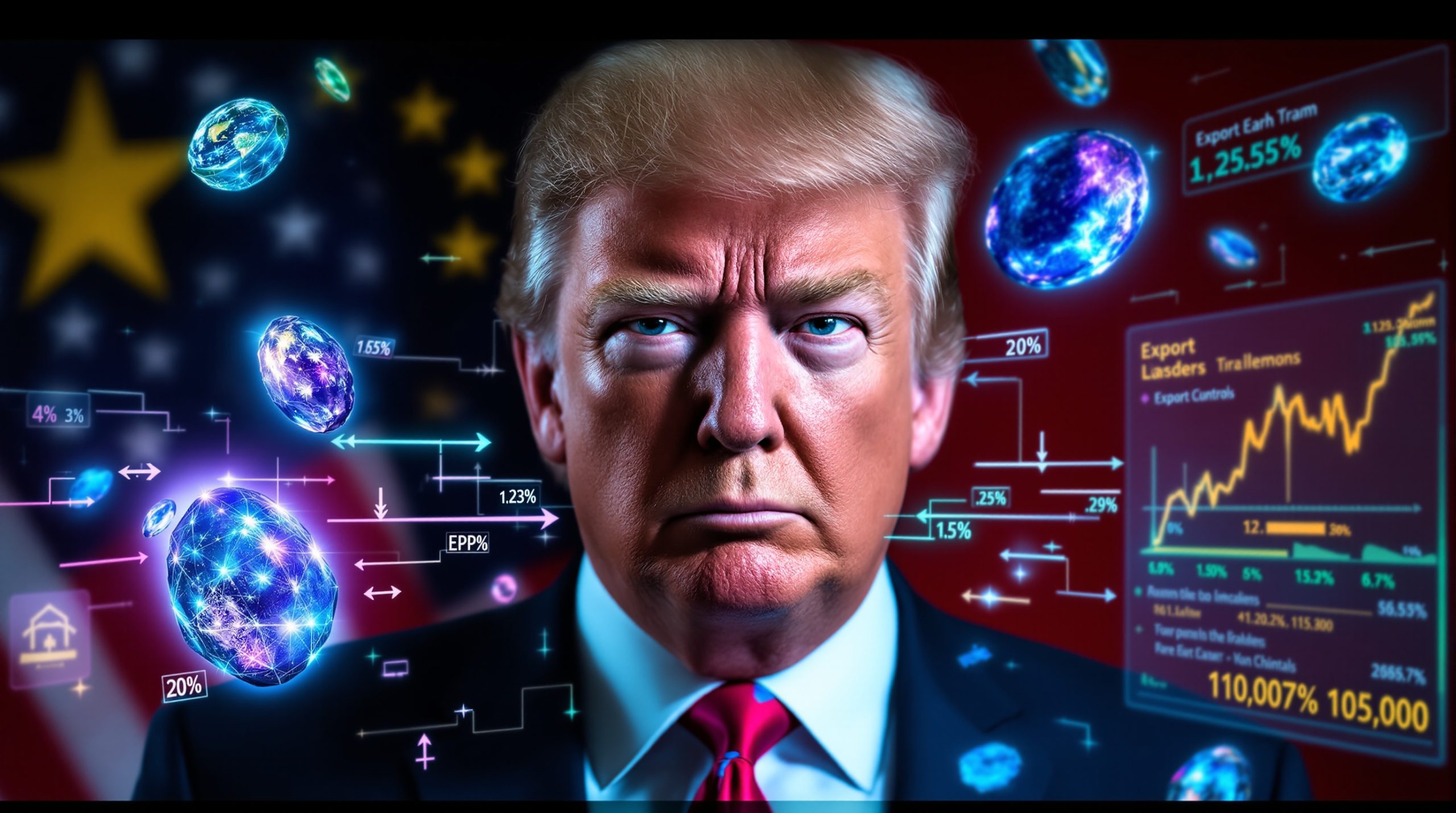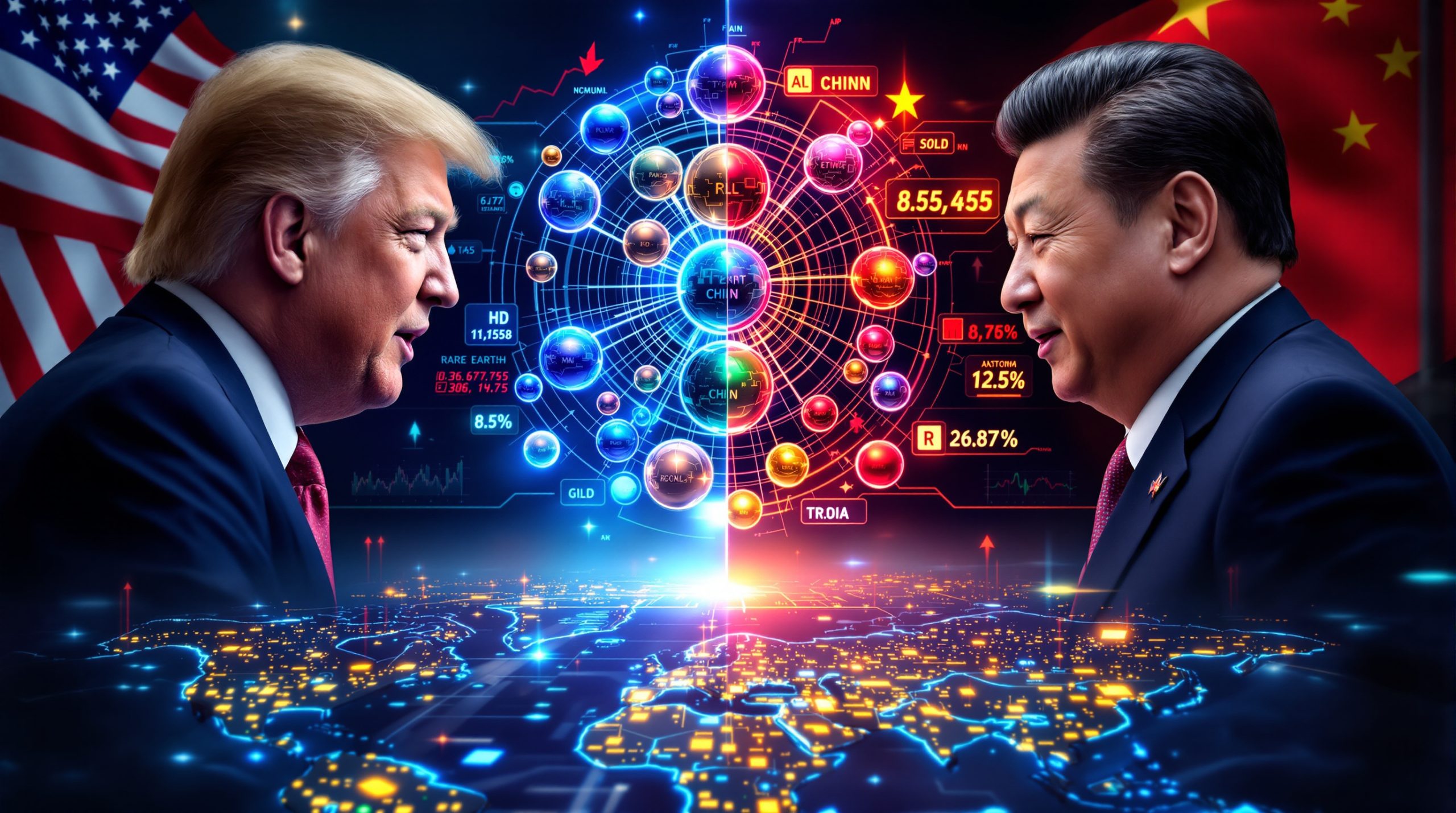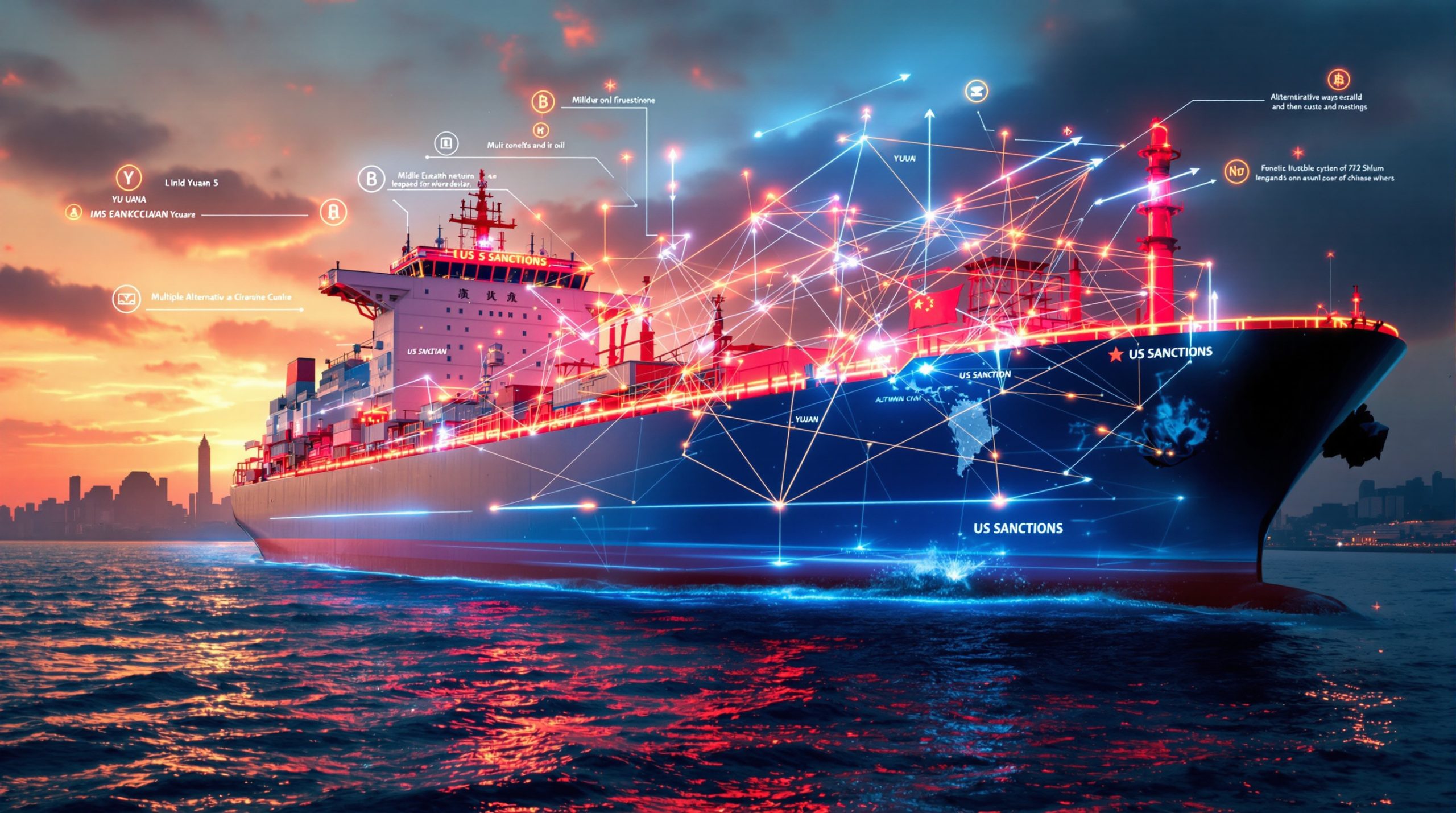What's Really Happening in the Iran-Israel Conflict?
The escalating tensions between Iran and Israel represent more than just headline-grabbing military exchanges. Behind the missile strikes and public confrontations lies a sophisticated struggle for economic dominance, resource control, and strategic positioning that shapes the entire Middle East power dynamic.
The Hidden War of Markets and Maritime Chokepoints
While missiles and military operations capture global attention, the true strategic contest centers on control of critical maritime passages and energy resources. Iran's geographic position alongside the Persian Gulf and Strait of Hormuz provides leverage over global energy security and minerals that extends far beyond its military capabilities.
"The conflict extends far beyond missiles, revealing a struggle over trade routes and energy leverage. While military strikes dominate headlines, the real battle is for control of maritime passages like the Strait of Hormuz," explains geopolitical analyst J. Martin.
This hidden economic dimension explains why Iran can maintain regional influence despite international isolation. By controlling maritime chokepoints that affect 25% of global oil supplies, Iran effectively holds significant leverage over world energy markets, allowing it to project power disproportionate to its economic or military size.
Understanding the Conflict Through Trade Dynamics
Viewing the rising tensions between Iran and Israel through the lens of trade flows and economic dependencies offers clarity amid conflicting political narratives. Iran's ability to disrupt vital energy shipments—whether through direct action or merely threatening it—creates a powerful economic weapon.
The strategic significance becomes clearer when examining Iran's tactics. Insurance premiums for Gulf shipping can surge by up to 500% during periods of Iranian threats, effectively throttling tanker traffic without requiring a military blockade. This psychological leverage allows Iran to influence global tariff impact without firing a single shot.
Iran's "dark fleet" of 1.7 million barrels exported daily despite sanctions demonstrates how resource-rich countries can navigate isolation by creating parallel economic systems. These shadow networks not only sustain Iran's economy but fund its broader regional strategy, including support for proxy forces that extend its influence to Israel's borders.
Why is the Persian Gulf Central to This Conflict?
The Persian Gulf represents one of the world's most critical maritime regions, bordered by major energy producers including the United Arab Emirates, Qatar, Saudi Arabia, Kuwait, Iraq, and Iran. Understanding this body of water's strategic importance provides essential context for the broader conflict.
The Strategic Importance of the Persian Gulf
The Persian Gulf serves as the source for approximately 25% of global oil production and 20% of the world's natural gas. This concentration of energy resources creates an economic focal point with influence extending far beyond regional politics. With 90% of Gulf exports transiting through limited maritime passages, control of these waterways equals influence over global energy markets.
Iran's 1,500-kilometer coastline along the Gulf provides natural geographic advantages, particularly its complete control of the Strait of Hormuz's northern flank. This positioning transformed from a geographical footnote into a powerful strategic asset following increased sanctions and regional tensions.
The economic significance extends far beyond immediate neighbors, affecting energy markets, shipping insurance rates, and supply chains worldwide. For context, disruptions in this region can trigger price spikes that ripple through global markets within hours, affecting everything from transportation costs to manufacturing output.
The Strait of Hormuz: A Critical Global Chokepoint
At just 30 kilometers wide at its narrowest point, the Strait of Hormuz functions as the sole maritime gateway connecting Persian Gulf states to global markets. This narrow passage serves as a valve controlling the flow of a quarter of the world's oil, making it one of the most strategically valuable locations on Earth.
"The Strait functions as a valve controlling a quarter of the world's oil. Iran's geographic advantage transformed from footnote to leverage after U.S. sanctions," notes J. Martin.
The strait's vulnerability stems from its narrow navigational channels, which can be effectively threatened by relatively simple tactics. Iran's control of the entire northern coastline provides significant military advantages, including the ability to:
- Deploy sea mines across shipping lanes
- Position anti-ship missile systems with complete coverage of transit routes
- Conduct surveillance of all maritime traffic
- Rapidly deploy naval vessels to intercept commercial shipping
With 17.4 million barrels passing daily through this narrow corridor, even minor disruptions can trigger major market reactions. Attempts to create alternative routes, like the UAE's Habshan-Fujairah pipeline that handles 1.5 million barrels per day, still leave the majority of exports vulnerable to disruption.
Iran's Growing Maritime Leverage
Iran's geographic advantage along the Persian Gulf has transformed from a geopolitical footnote into a powerful bargaining chip over the past six years. Following the U.S. withdrawal from the nuclear deal in 2018 and reimposition of sanctions in 2019, Iran began leveraging its position through increasingly aggressive maritime tactics.
In 2023 alone, Iranian naval forces boarded 15 commercial vessels under "inspection" pretexts, delaying shipments by more than 48 hours and sending ripples through global energy markets. These actions demonstrate Iran's asymmetric approach to projecting power despite conventional military disadvantages.
Iran's maritime strategy includes:
- Deploying sea mines in strategic locations
- Harassing and occasionally seizing foreign oil tankers
- Positioning anti-ship missiles (including Ghadir-1 systems) along its coastline
- Creating psychological pressure that impacts shipping insurance rates
- Conducting naval exercises demonstrating strait closure capabilities
This maritime leverage directly affects Israel by threatening energy shipments, raising costs for allies, and diverting international military resources that might otherwise constrain Iran's regional proxies.
How Have Sanctions Shaped Iran's Strategic Position?
International sanctions against Iran, particularly those targeting its energy sector, have profoundly reshaped the country's economic strategy and regional posture. Rather than achieving their intended goal of limiting Iran's influence, sanctions have in many ways accelerated the development of alternative economic networks that now challenge Western financial hegemony.
The Impact of Oil Sanctions on Iran's Economy
U.S. sanctions barred Iranian oil from dollar-based markets, severely impacting a country with the world's third-largest oil reserves and potentially second-largest natural gas deposits. These restrictions triggered one of Iran's worst economic crises in decades, with official oil exports plummeting from 2.8 million barrels per day in 2017 to just 0.5 million in 2019, helping trigger 40% inflation within the country.
As J. Martin observes: "Sanctions backfired: They gifted China discounted oil while funding IRGC militias. Iran's dark fleet proves resource-rich states bypass isolation."
The sanctions created immediate economic hardship but also forced Iran to develop sophisticated sanctions-evasion mechanisms that have since become a model for other nations facing Western economic pressure. This includes alternative payment systems, barter arrangements, and maritime shipping networks operating outside traditional oversight.
Iran's "Dark Fleet" Maritime Strategy
To circumvent sanctions, Iran developed a sophisticated covert shipping network known as the "dark fleet" or "ghost fleet" capable of transporting up to 1.7 million barrels of Iranian oil daily. This shadow transportation system employs:
- Aging tankers operating without active transponders
- Vessels owned by shell companies registered under flags of convenience
- Ships registered in countries like Panama or the Marshall Islands
- Nighttime ship-to-ship transfers to obscure origin
- False shipping documentation and fraudulent bills of lading
The 2024 case of the VLCC "Pacific Bravo" demonstrates these tactics in action. The vessel transported 2 million barrels while displaying fake Indonesian registration and disabled tracking systems, successfully delivering sanctioned oil to buyers in Asia.
The dark fleet's operations involve sophisticated counter-surveillance techniques, including:
- Disabling AIS transponders in international waters
- Operating under multiple vessel names and registrations
- Conducting transfers beyond territorial waters
- Using shell companies to obscure beneficial ownership
- Exploiting registration loopholes in maritime governance
China's Role as Iran's Primary Oil Customer
China has emerged as the primary beneficiary of Iran's sanctioned oil exports, purchasing approximately 1.1 million barrels per day at steep discounts averaging $11 below market rates. This arrangement flows primarily through:
- Small independent "teapot refineries" in Shandong province
- Private rather than state-owned facilities creating plausible deniability
- Blending operations that mix Iranian crude with other sources to obscure origin
- Alternative payment mechanisms outside the dollar system
This arrangement provides China with significant economic advantages, saving approximately $12 billion annually on oil imports and reducing manufacturing energy costs by an estimated 18%. These savings directly enhance China's industrial competitiveness while simultaneously strengthening ties with Iran.
The Revolutionary Guard's Economic Interests
The Iranian Revolutionary Guard Corps (IRGC) maintains deep connections to this shadow oil trading system, using revenues estimated at $700 million monthly to:
- Fund military operations
- Support proxy forces throughout the region
- Maintain economic viability despite international isolation
- Project regional power despite sanctions
This economic pipeline explains Iran's continued ability to finance operations against Israel despite severe banking and trade restrictions. The sanctions paradoxically strengthened the IRGC's position within Iran's economy by creating dependence on their sanctions-evasion expertise.
What Are the Strategic Implications for Global Powers?
The Iran-Israel tensions reflect a broader contest for influence among global powers, particularly the United States and China. Both superpowers view the conflict through the lens of energy security, market access, and strategic positioning, with implications extending far beyond the immediate region.
America's Interest in the Strait of Hormuz
The United States views the Strait of Hormuz as a critical leverage point in global energy markets and regional influence:
- Control would provide influence over 25% of global oil flows
- Disruptions directly impact U.S. gas prices and inflation
- The strait represents economic insurance for American interests
- U.S. seeks to transfer Iran's current leverage to itself or allies
Pentagon war games have simulated Hormuz closure scenarios, revealing that U.S. Strategic Petroleum Reserve releases could offset approximately 60% of shortages for 90 days, but would struggle to mitigate longer disruptions. This vulnerability explains America's continued military commitment to the region despite domestic energy production increases.
The U.S. Fifth Fleet operations increasingly focus on "graceful degradation" tactics—electronic warfare capabilities designed to jam Iranian drones and communications while avoiding direct escalation that could further destabilize energy markets.
How Sanctions Have Benefited China
The sanctions regime has created unintended advantages for China that extend beyond discounted oil:
- Access to Iranian oil at $11-15 below market rates
- Strengthened economic ties between Beijing and Tehran
- Reduced energy costs for Chinese manufacturing
- Creation of a parallel energy market outside Western control
China effectively exploits a situation where it can simultaneously maintain relationships with Iran, Israel, and Gulf states, maximizing economic advantage while minimizing political risk. This balancing act allows China to increase regional influence while the U.S. remains focused on security concerns and alliance management.
The "Nickel Play" Comparison
The U.S. approach to the Strait of Hormuz mirrors China's strategy in Indonesia's nickel industry, providing an illuminating parallel:
- China secured dominance over 61% of global nickel through Indonesian investments totaling $65 billion
- This percentage exceeds OPEC's peak oil market share (51% in 1973)
- The strategy included flooding markets to crash prices 30%, forcing Western competitors into bankruptcy
- Similarly, the U.S. seeks proxy control over oil flows without direct ownership
"The U.S. seeks Iran's Hormuz leverage to combine with domestic output—a nickel play comparison for near-monopoly oil influence. China won the sanctions war," explains J. Martin.
If successful, U.S. domestic production (18.4 million barrels per day) combined with Gulf allies' output (15 million barrels per day) would control approximately 33% of global oil—providing significant market leverage if Hormuz access remains secure.
The Long-term Value of Iran's Untapped Resources
Iran's vast energy reserves represent more than just current production:
- Third-largest oil reserves globally
- Potentially second-largest natural gas reserves
- Relatively underexplored territories suggesting even greater potential
- Significant geopolitical weight in future energy markets
The contest for influence over Iran's resources explains both the persistence of conflict and the reluctance of major powers to allow full-scale war that might destroy valuable energy infrastructure. Both China and Russia view Iran's resources as essential to their long-term energy security, creating a counterweight to Western pressure.
How Might This Conflict Evolve?
The Iran-Israel conflict is likely to evolve beyond conventional military confrontations into a multi-dimensional contest for regional influence, economic advantage, and strategic positioning. Understanding potential trajectories requires looking beyond immediate military exchanges to underlying economic and geopolitical factors.
Beyond Military Confrontation
While immediate attention focuses on missile exchanges and military posturing, the long-term strategic game revolves around:
- Control of maritime chokepoints
- Access to energy markets
- Development of alternative trade routes
- Formation of new economic alliances
The most probable scenario involves continued low-intensity conflict designed to apply pressure without triggering uncontrollable escalation. Both Iran and Israel understand the catastrophic consequences of full-scale war, leading to carefully calibrated actions that remain below thresholds that would force major power intervention.
Future confrontations will likely target economic vulnerabilities—Iran focusing on maritime disruption and Israel targeting infrastructure supporting Iran's sanctions evasion networks. These asymmetric approaches allow both sides to apply pressure while maintaining plausible deniability and avoiding direct confrontation.
The Economic Warfare Dimension
Both sides are engaged in sophisticated economic warfare strategies that will continue to evolve:
- Targeting shipping and insurance markets
- Developing alternative payment systems
- Creating parallel supply chains
- Leveraging geographic advantages
Iran's continued refinement of sanctions evasion techniques represents a strategic threat to Western economic pressure tools. As these methods become more sophisticated, the effectiveness of sanctions as a policy instrument diminishes, potentially forcing Western powers to reconsider their approach to regional conflicts.
Israel's counter-strategy increasingly targets financial networks supporting Iran's proxy forces, attempting to disrupt funding channels that connect oil revenues to regional militias. This financial battlefield receives less attention than kinetic operations but may ultimately prove more decisive in shaping regional power balances.
Regional Power Realignment
The conflict is accelerating broader regional realignments with long-term strategic implications:
- Gulf states reassessing their security partnerships
- China expanding its Middle Eastern influence
- Russia maintaining strategic ties with Iran
- Western powers seeking to preserve their regional influence
The Abraham Accords represent one manifestation of this realignment, with Israel and Gulf states finding common cause against Iranian influence. This evolving security architecture creates new diplomatic possibilities but also risks intensifying Iran's sense of encirclement and desperation.
China's expanding influence offers Iran economic alternatives to Western engagement while providing Gulf states with a potential security partner less demanding than the United States. This multi-polar competitive environment creates both opportunities and risks for regional stability.
The Future of Energy Security
As the conflict continues, global energy security concerns will shape diplomatic and military decisions:
- Development of alternative shipping routes
- Investment in energy independence technologies
- Creation of new strategic reserves
- Formation of new energy alliances
The conflict accelerates investment in alternative energy sources and supply routes as insurance against regional instability. This includes both short-term measures like expanded strategic petroleum reserves and long-term transitions away from fossil fuels that reduce vulnerability to Middle East disruptions.
Technological developments in energy storage, transportation, and production will gradually reshape the strategic importance of the Persian Gulf, potentially reducing Iran's geographic leverage over time. However, this transition will unfold over decades rather than years, ensuring the region remains strategically vital for the foreseeable future.
What Should Investors and Analysts Monitor?
For those watching the Iran-Israel conflict from financial, energy, or security perspectives, several key indicators provide early warning of escalation and potential market impacts. Understanding these signals allows for better risk assessment and strategic planning.
Key Indicators of Escalation
Those watching the conflict should focus on:
- Insurance premium rates for Gulf shipping
- Oil price volatility and risk premiums
- Chinese purchasing patterns of Iranian oil
- Development of alternative maritime routes
Insurance rates provide a particularly sensitive early warning system, as underwriters continually reassess risk based on comprehensive intelligence. Premium increases of 200-300% indicate serious concern, while spikes of 500% or more signal imminent threats to shipping.
Market volatility offers another window into risk assessment, with the "Iran premium" in oil futures contracts typically reflecting 3-5% during normal tensions but expanding to 10-15% during serious escalation. These market signals often precede official statements or visible military movements.
Strategic Chokepoint Control
The competition for influence over maritime passages will intensify, with several developments worth monitoring:
- Military presence near the Strait of Hormuz
- Development of pipeline alternatives
- Diplomatic efforts to secure shipping rights
- Naval exercises and capability demonstrations
Look for increased frequency of Iranian maritime intercepts, which typically precede more aggressive actions. Similarly, expanded Western naval patrols indicate anticipation of potential disruptions, with carrier group deployments representing the clearest signal of serious concern.
Infrastructure investments provide longer-term indicators of strategic thinking. Acceleration of alternative pipeline routes through Saudi Arabia, Iraq, or the UAE would signal diminishing confidence in Hormuz stability, while expanded terminal facilities on the Red Sea or Mediterranean suggest preparation for extended disruptions.
Energy Market Disruptions
Potential market impacts include:
- Short-term price spikes during periods of tension
- Long-term investment in alternative energy sources
- Shifting trade patterns for major energy consumers
- Realignment of refining and distribution networks
Watch for changes in Asian refinery configurations that might indicate preparation for different crude sources, as well as expanded strategic petroleum reserve capacity in China, India, and Japan that would provide insurance against supply disruptions.
Trade flow adjust
Hunting for the Next Major Mineral Discovery?
Discover how significant ASX mineral discoveries can generate substantial returns for investors by exploring Discovery Alert's dedicated discoveries page, powered by their proprietary Discovery IQ model that turns complex mineral data into actionable insights. Begin your 30-day free trial today at Discovery Alert to position yourself ahead of the market.




